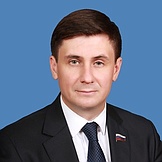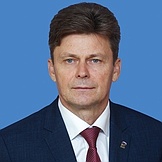Regional flags and emblems


PROFILE
Established 5 July 1944
Capital Bryansk
The Bryansk Region is part of the Central Federal District
Area 34,900 sq km
Population 1 132 500 (2025)
Ethnic groups
(2020 National Census, %)
Russian – 95,87
Other – 4,13
Administrative divisions (2024):
Municipal areas – 24
Municipal districts – 2
City districts – 5
Rural towns – 29
Rural districts – 176
Geography and climate
The Bryansk Region lies in the western part of the East European Plain, occupying the middle part of the Desna River basin and the wooded watershed between the Desna and Oka rivers. The region borders on the Smolensk, Kaluga, Orel and Kursk regions, and shares state borders with Belarus and Ukraine.
Its location at a geographical point where the borders of three countries meet gives the Bryansk Region a considerable competitive advantage in all areas for development. A significant volume of passenger and freight traffic between Russia and Western Europe traverses the Bryansk Region. Also, the region accommodates major gas and oil pipelines that supply oil and gas to the CIS and other countries.
About 25% of the region is covered in forests, including coniferous, mixed and deciduous forests. The region also features a forest steppe. The climate is temperate continental. January temperatures average –6,2°C. July temperatures average 17,9°C.
On the territory of the Bryansk Region there are ten state natural sanctuaries, the Bryansky Les State Nature Reserve, 117 natural monuments of regional significance.
Government
The legislative branch is represented by the Bryansk Region Duma, which is the permanent, supreme, representative and only legislative body in the region.
The Bryansk Region Duma has 60 members elected for five years, with 30 of them running in single-mandate constituencies and the other 30 in the single electoral district, where winners are identified in proportion to the number of votes cast for lists of candidates nominated by electoral associations.
The current Bryansk Region Duma was elected in September 2024. Its term expires in September 2029.
The system of executive bodies of the Bryansk Region includes the Governor of the Bryansk Region, the Government of the Bryansk Region, the Administration of the Governor and the Government of the Bryansk Region, as well as regional departments and other executive bodies. The Government of the Bryansk Region is a permanent supreme executive body of state power of the Bryansk Region.
The Governor of the Bryansk Region is the region’s highest-ranking official, who runs the executive branch of the region, determines its structure, forms and heads the Government of the region. He is elected for five years by Russian citizens who permanently reside in the region. The term of the incumbent Governor expires in September 2025.
Economy and natural resources
The region’s key industries are mining, manufacturing and the generation and distribution of electricity, gas and water. Currently, the leading enterprises in the region are machine building and metal processing plants.
Manufacturing includes the production of transport vehicles and equipment, machinery and equipment, non-metal mineral commodities, charred coal and petroleum products, timber processing and woodwork, and the production of furniture, food products, including beverages, and tobacco. The Bryansk Region manufactures up to 80% of all diesel locomotives and motor graders made in the country and is one of the country’s main manufacturers of mobile cranes.
The industrial complex is characterized by a high degree of territorial concentration of production. Industrial production is largely concentrated in the northeast part of the region (Bryansk and the Dyatkovsky District). In the west, there are two cities with diversified industrial complexes: Klintsy and Novozybkov.
The region has explored reserves of sand, clay, chalk, malm and other construction materials, as well as phosphorite.
The food and food-processing industries, primarily, meat-processing plants and canneries, account for a large share of the industrial sector. Other significant sectors are metal processing and production of construction materials, including glass, cement, insulating materials and fibreglass.
The share of the agricultural sector in the regional GDP amounts to 19%. The agricultural sector meets local consumer demand for the main farming produce almost in full. High growth rates are sustained by the implementation of major investment projects in beef cattle breeding and poultry farming as well as the State Programme for the Development of Agriculture and Regulation of the Markets of Agricultural Produce, Raw Products and Food. Under the programme subsidies are given to buy cattle, machinery and materials, build and renovate cattle sheds, train specialists and upgrade rural areas. To encourage the development of agriculture, the Bryansk Region Government takes measures to expand the agricultural land through the cultivation of unused land.
Culture and tourism
The Partizanskaya Polyana [Partizan Glade] Memorial Complex, which is Russia’s only monument to the heroes of the partisan movement during the Great Patriotic War, is a visiting card for the Bryansk Region. The Wall of Memory, which perpetuates the names of over 8,000 partisans who were killed during the war, and the Eternal Flame are at the centre of the memorial. The Museum of Partisan Glory complex includes the Museum of the History of the Partisan Movement in the Bryansk Region.
The Khatsun Memorial Complex dedicated to civilian victims was unveiled in 2011, the year when the country was marking a tragic date – the 70th anniversary of the beginning of the Great Patriotic War.
The Alexei Tolstoy Bryansk Regional Drama Theatre, which marked its 90th anniversary, is seen as a symbol of the performing arts in the region. Another popular theatre is the Bryansk Youth Theatre, which is located in a scenic part of Bryansk.
The Druzhba Concert Hall, which was built ahead of the 1,000th anniversary of Bryansk, is home to the Bryansk State Philharmonic.
The most noteworthy landmarks of religious architecture include the Nativity of the Holy Mother of God Church in Stary Ropsk, Klimovsky District; the Svensky Monastery; the Trinity Cathedral in Trubchyovsk; the Nativity of Christ Cathedral in Staroduba; the Resurrection Cathedral in Pochep; the St Catherine Church in the village of Lyalichi, Surazhsky District; and the Transfiguration Church with no cupola in the village of Tvorishichi, Zhiryatinsky District.
The Dyatkovsky Chrystal Factory, which was built in the 18th century by prominent manufacturers, the Maltsovs, is one of Russia’s oldest enterprises. There is a church in Dyatkovo, which was built in honour of the Mother of God of the Burning Bush icon. The church’s crystal iconostasis, the only one of its kind in the world, was made by local crystal masters.
There are two estates in the region that are associated with people who made a considerable contribution to Russian culture: Alexei Tolstoy, a poet, prose writer and playwright, who lived for many years on his estate in the village of Krasny Rog, Pochepsky District; and Fyodor Tyutchev, a poet, philosopher and diplomat, who spent his childhood and youth on his estate in the village of Ovstug, Zhukovsky District.


